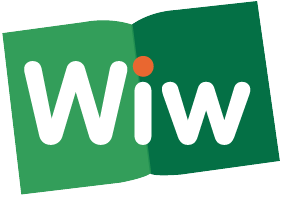 I get a lot of pushback when I coach business writers to use fewer big words and to focus instead of on the clarity of the message. People think I’m telling them to “dumb down” the message, ignore their education, or set aside their technical knowledge. But I’m not.
I get a lot of pushback when I coach business writers to use fewer big words and to focus instead of on the clarity of the message. People think I’m telling them to “dumb down” the message, ignore their education, or set aside their technical knowledge. But I’m not.
I can certainly understand the concern. Having worked with numerous business clients around the world and even having authored several books myself, I am proud of the ways I can use language to show off my own training. In some countries like India, this is core to a writer’s identity; a writer’s expansive vocabulary can show how well educated they are (one’s true net worth).
But being a great writer isn’t just about the big words you have acquired in school: it's about connecting with your audience and helping them understand your message.
You can “impress people by communicating clearly, not by using big words.” Here are three reasons why you should consider writing to a middle school reading level.
Most People Don’t Read Well.
Yes, it’s true. Most people don’t read well. Whether it’s because they are distracted, not interested in the topic, or don’t want to work hard to read complex information, many American adults are not proficient at reading, and especially when compared to their peers around the world.
Writing to a reading grade level has nothing to do with education level. Reading is a skill: one you can lose over time if not consistently improving it.
Further, you’re not “talking down” to your audience when you write at a 6th-grade reading level. You’re ensuring your message is clearly understood by a variety of people.
I often refer to the Flesch Kinkaid readability studies, Curious as to what grade level you are writing to? Check out this simple tool or use the features in Microsoft Word to see!
Most People are In a Hurry.
Most people are not only pressed for time, but they also have ever-shrinking attention spans (most adults today have the attention span of a goldfish – about 8 seconds – down from 12 seconds a few years ago.) Further, people simply aren’t reading your information all the way through – especially on the web. They are skimming and scanning; looking for the information that they can grasp quickly.
 Many People Speak English as a Second Language.
Many People Speak English as a Second Language.
Don’t assume that your audience speaks English as their primary language, even if they are located in the US. According to US Census documents, 60 million respondents speak a language other than English at home.
How Can I Change My Writing?
You can write to a 5th-7th-grade reading level in a way that still covers all the facts and is understood by your audience, but it does mean adapting your writing style.
Here are five ways to simplify your writing so that it’s easily understood by the broadest possible audience:
- Don’t use a $20 word when a 5 cent word will suffice. Everyday words make it easier for people to skim and remember your content.
- Use active language. Active language makes your content easier to understand. Passive language can create awkward sentence structures.
- Get rid of extra words. Choose your words carefully; eliminate vague words and choose specific, descriptive language.
- Streamline your sentences. While you’re simplifying your words, also consider using simpler sentences.
- Explain it to a kindergartener. Whenever I’m trying to explain a complex thing to someone, I always remember a tip a former client of mine used. He used to say he would pretend he had to explain that high tech, highly complex topic to his son’s kindergarten class. This forced him to focus on the most important elements, and streamline the ideas.
Remember: You must be a master of the content and concepts in order to explain them in ways that everyone can understand. Impress your reader by how clearly you communicate.
By using everyday words and simple sentence structures, you are going to speed your reader up instead of slowing them down. This, in turn, increases the chance that they will read – and act on – your message.
And at the end of the day… Isn’t that why we write?
Want to learn more about being a better writer or editor? Check out our books (Amazon) and courses.
about any of our products or services.




